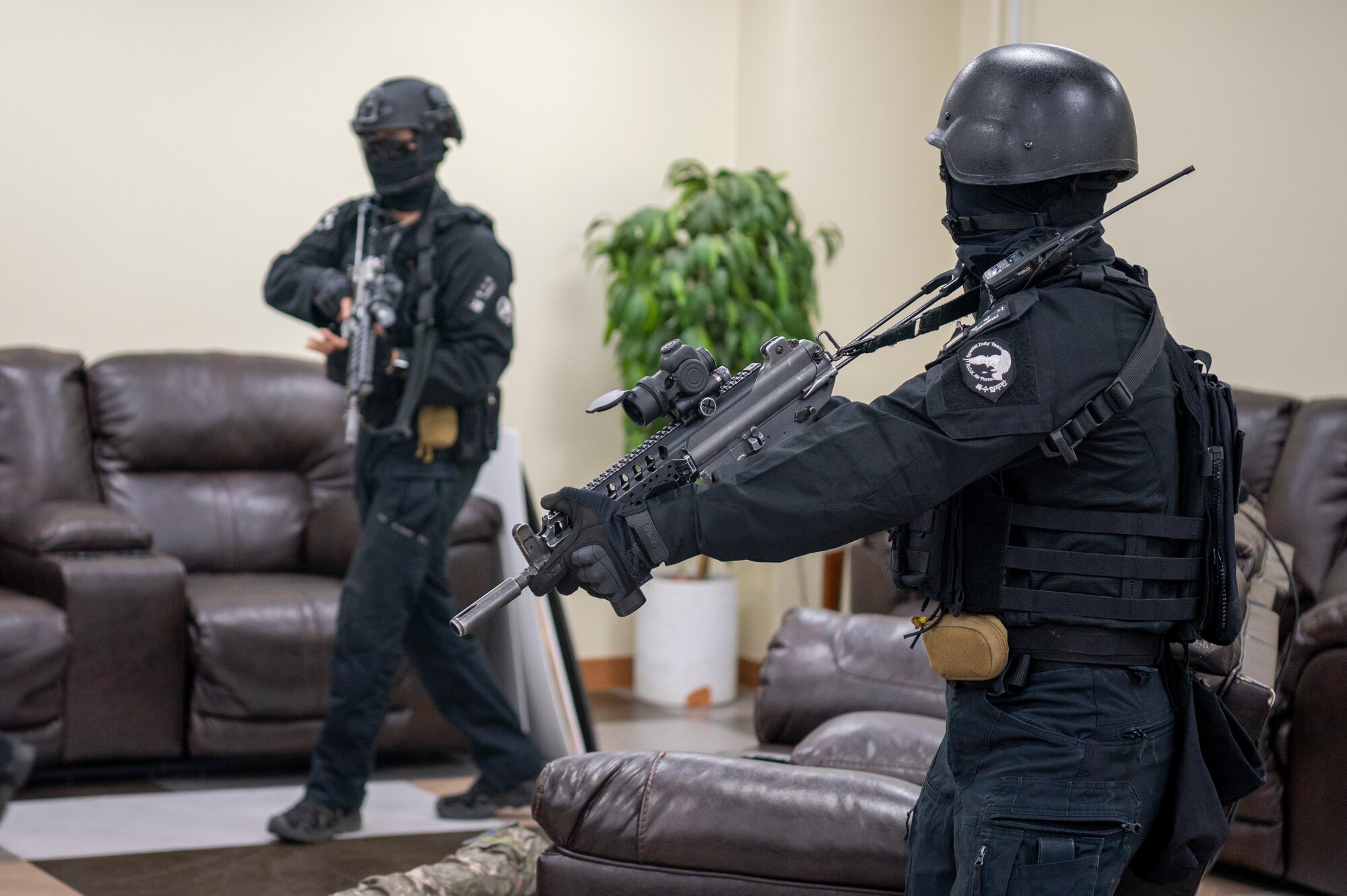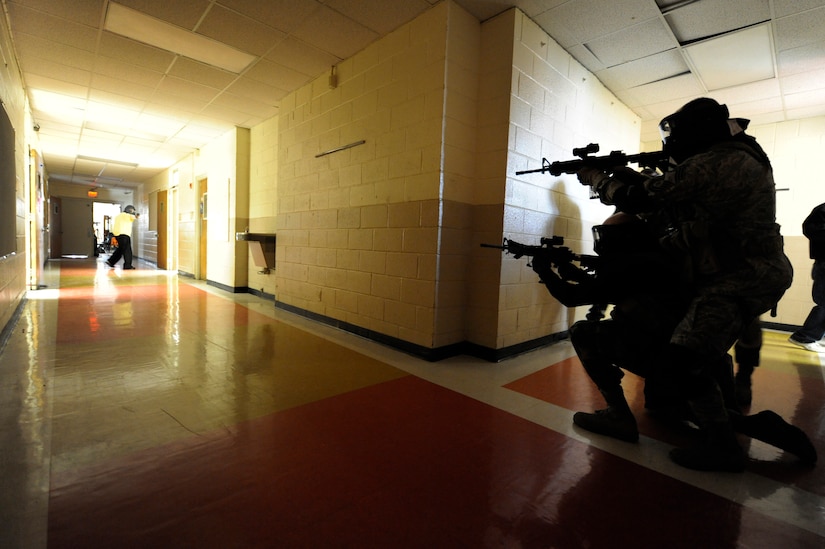Efficient Methods and Techniques in Active Shooter Training for Improved Safety And Security
In today's ever-evolving protection landscape, the value of preparedness and efficient action techniques in the face of active shooter incidents can not be overemphasized. By diving into the complexities of each of these components and discovering just how they can work in consistency, a more effective and robust active shooter training program can be created to boost protection procedures.
Risk Assessment and Threat Analysis
Reliable threat assessment and extensive danger analysis are foundational elements in boosting safety and security measures throughout energetic shooter training programs. By conducting a detailed danger assessment, companies can develop and recognize prospective vulnerabilities targeted techniques to reduce risks connected with active shooter incidents. This procedure includes assessing factors such as center design, gain access to points, security systems, and emergency situation procedures to create a thorough understanding of the certain dangers faced by the company.
Risk analysis plays an essential role in energetic shooter training programs by determining possible opponents, their capabilities, and their purposes. This info is used to make sensible training scenarios that mimic the methods and habits of possible enemies, allowing individuals to exercise suitable feedbacks in a controlled setting. By integrating threat analysis right into training exercises, organizations can better prepare their personnel to identify and react successfully to active shooter circumstances.
Dilemma Interaction and Reaction Strategies
Due to the detailed threat assessment and complete risk analysis performed during energetic shooter training programs, a critical facet that organizations have to deal with is the advancement of crisis interaction and feedback plans. These plans are necessary for guaranteeing a collaborated and efficient response to an energetic shooter scenario, reducing prospective injury to individuals, and enhancing overall safety actions.
Effective situation interaction plans ought to describe clear protocols for disseminating details to all stakeholders, including employees, visitors, police, and the media. Timely and exact communication is critical in taking care of the situation, supplying guidelines on just how to remain safe, and preventing panic or false information from dispersing.
Action plans, on the various other hand, detail the particular activities that individuals need to take in the event of an energetic shooter case. Routine training, drills, and updates to these plans are imperative to ensure their performance and the safety of everybody entailed.
Active Shooter Situation Drills
Performing regular active shooter circumstance drills is critical for preparing individuals and organizations to respond properly in high-stress scenarios. These drills simulate real-life energetic shooter scenarios, allowing individuals to exercise their reactions and assess the performance of their training and emergency situation protocols (active shooter training). By performing these drills, individuals can familiarize themselves with the audio of simulated shooting, practice lockdown treatments, emptying routes, and communication methods
Active shooter circumstance drills also aid in identifying possible weaknesses in security steps and reaction plans. Via these simulations, companies can analyze the performance of their safety protocols, communication systems, and coordination amongst personnel. Carrying out these drills frequently can assist in refining existing treatments, carrying out improvements, and ensuring that all people are prepared to act swiftly and decisively in the occasion of an energetic shooter case.

Emergency Situation Medical Training and First Help
Enhancing preparedness for emergency situations, including active shooter occurrences, demands comprehensive training in emergency medical procedures and emergency treatment. In the event of an active shooter circumstance, people trained check in emergency medical procedures can supply Get the facts essential assistance to those hurt till specialist clinical aid arrives. Emergency treatment training outfits individuals with the understanding and skills to carry out instant treatment, support individuals, and potentially save lives.
Secret elements of emergency clinical training consist of discovering how to manage blood loss, use tourniquets, perform CPR, and treat various injuries. Individuals likewise discover just how to focus on care based upon the seriousness of injuries and the offered sources. In addition, training in initial aid assists individuals remain calm and concentrated throughout disorderly scenarios, allowing them to make informed and quick choices under stress.

Mental Assistance and Trauma Care
Providing emotional assistance and trauma care is essential in alleviating the emotional impact of emergency situation circumstances, such as active shooter cases. When people experience such distressing occasions, they might deal with an array of mental distress, including stress and anxiety, anxiety, and trauma (PTSD) Therefore, it is vital to have educated professionals available to supply instant assistance and interventions to assist people deal with the consequences of such situations.
Psychological emergency treatment is a vital component of replying to active shooter occurrences. This approach includes giving useful help, emotional support, and coping techniques to those affected by the trauma. By addressing the mental requirements imp source of individuals without delay, the likelihood of long-lasting adverse results can be minimized, and people can begin the procedure of healing and recuperation.
In addition to instant psychological support, continuous injury treatment is crucial for those influenced by active shooter occurrences. This may include access to counseling services, support system, and other resources to assist people navigate the facility emotions and difficulties that can emerge following such terrible occasions. By focusing on emotional support and injury care in active shooter training programs, companies can better prepare people to manage the emotional aftermath of such emergencies.
Verdict
In final thought, efficient techniques and strategies in energetic shooter training play an essential duty in enhancing protection actions. By carrying out danger evaluations, establishing crisis interaction strategies, practicing active shooter circumstance drills, supplying emergency clinical training, and supplying mental support, organizations can much better prepare for and react to such essential cases. It is vital for all stakeholders to be aggressive in implementing these measures to ensure the safety and health of people in a possible energetic shooter circumstance.
By delving into the complexities of each of these elements and exploring how they can function in harmony, a more robust and effective active shooter training program can be developed to improve protection actions.
Effective threat assessment and extensive risk evaluation are fundamental elements in improving protection measures during active shooter training programs. These drills simulate real-life active shooter situations, allowing participants to practice their actions and review the performance of their training and emergency situation protocols. By prioritizing mental assistance and trauma care in active shooter training programs, companies can much better prepare individuals to cope with the psychological consequences of such emergencies.
In conclusion, reliable approaches and methods in active shooter training play an essential function in boosting safety measures.